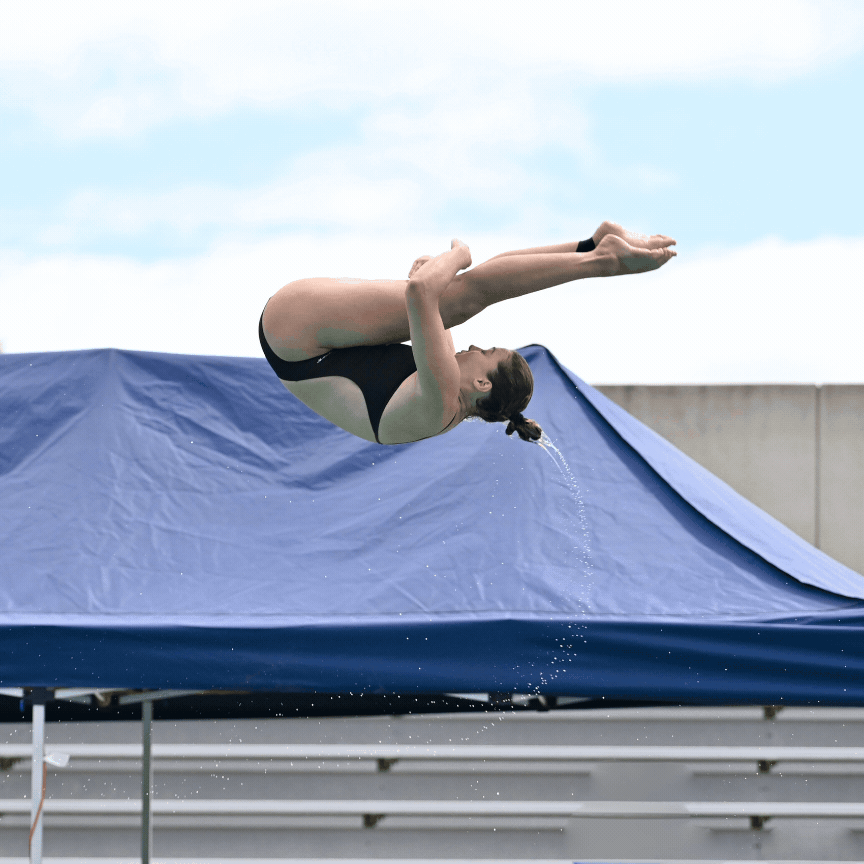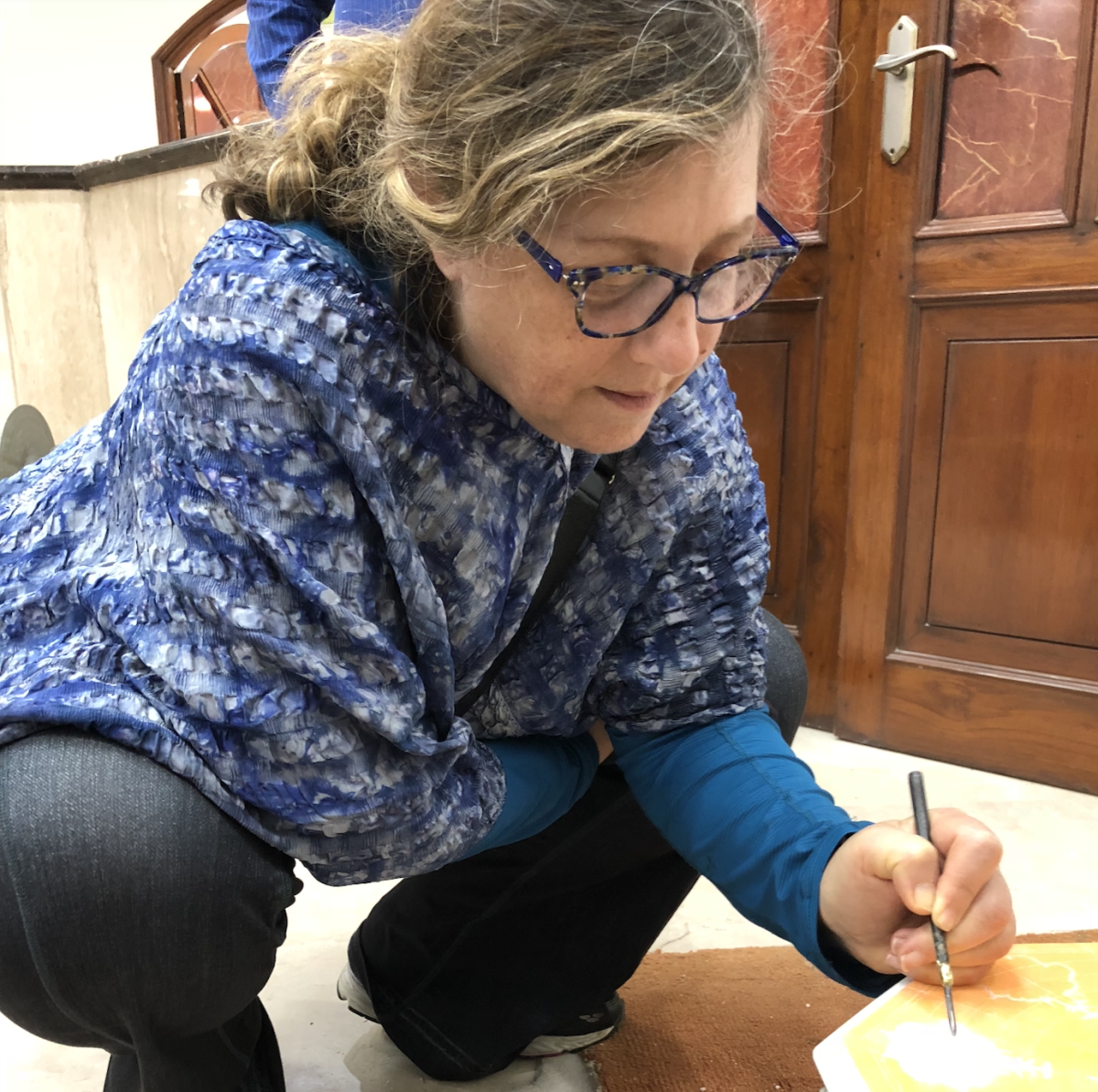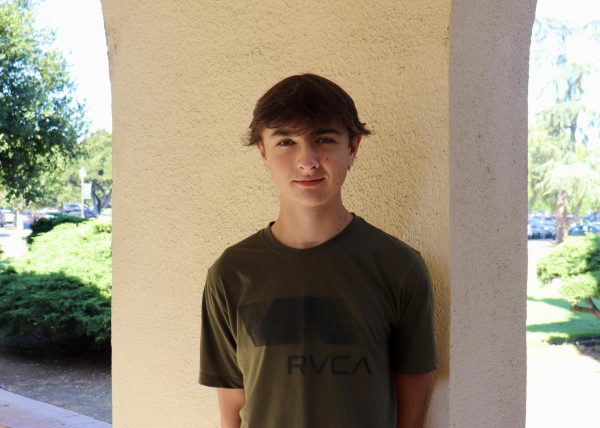Traditionally, art is defined as the application of human skill and creativity to a physical object or performance, evoking some emotion or reaction. When most think about artists they know, they consider painters, sculptors and musicians, often overlooking the artistic talents of one group in particular: athletes. Sports, often thought of as solely applications of physical, mental and technical skills, can also utilize this creativity in order to create a beautiful end product, reminiscent of what most people consider art.
Athletes, like traditional artists, perfect their craft through years of practice, dedication and discipline. Junior thrower Lia Cardwell has dedicated her time to channeling her energy and focus into producing the best throw possible.
“During my sophomore year, I spent a lot of time on the weekends, or just staying later at practice to get more reps in,” Cardwell said. “I saw quite literally a 30 foot improvement from my freshman year.”
Artistic elements of sports are also reflected in the ability of an athlete to be innovative, pushing the boundaries of what is considered to be possible. This is seen particularly in trick-based sports like skateboarding, diving and ice skating. In these trick-based sports, athletes are constantly striving to invent and master new maneuvers and skills. However, junior ice skater Briar Dorogusker has seen that these new tricks can come at a cost as creative ingenuity and storytelling is swapped for pure mastery of technical skill.
“A lot of people see [ice skating] as moving away from being artistic and just becoming a jumping routine with some moves in between,” Dorogusker said.
Although innovation is less prominent in other sports, pushing boundaries of what is possible can be seen in every sport. According to Cardwell, this creativity is necessary for athletes to hone their athletic skills.
“There’s room for interpretation because everyone is coming from different standpoints in terms of strength and technique,” Cardwell said. “That means that their technique is going to develop differently.”
As a thrower, Cardwell has learned the importance of being adaptable and open to new techniques in her throws to find what works best for her.
“[In throwing] there is a lot of room for expression in addition to technical ability, especially because we’re rotating in a circle and trying to move a heavy object as far as we can,” Cardwell said. “In this process, a lot of different techniques can develop and a lot of people have really good rhythm and tempo, and that helps them reach the common goal of throwing it a further distance. But, there’s also so much room for creativity and expression.”
In contrast, junior Roan Haney, a swimmer and water polo player, believes that originality in games can be difficult to achieve at times in team sports.
“It’s pretty hard to make up new creative ways to play my sport as everything is pretty well thought out by the coaches, but sometimes if the players have good enough chemistry together they can understand each other’s playing styles and improve on the go to link up with each other and create an effective play,” Haney said.
The creative process expands beyond an individual athlete, to encompass the collaborative efforts of coaches, choreographers, playmakers and teammates. Together they can craft performances and skills that elicit emotions and reflect innovation.
As a rock climber, senior Anne Threlkeld believes that artistry can be shown in sports through the problem-solving required to perform at a high level.
“In terms of balancing the technical aspect and the creativity, in climbing there are often very general technical rules like keeping your hips into the wall, but it’s super fun because each climb is so unique and can require completely different mental aspects and movements, and some problems can even break the rules entirely,” Threlkeld said.
These general technique rules give climbers a base guideline to work off of but allow for the athlete to challenge their usual techniques and dive into different approaches.
“I think the range of skills needed for climbing is super broad,” Threlkeld said. “It’s obviously helpful to have the things you’d expect like finger strength, but there’s also a ton of creativity involved in exploring unique movements.”
Paly athletes like Threlkeld push themselves to enhance their abilities both physically and intellectually.
“I think climbing is a great form of expression because you can get anything you need out of it,” Threlkeld. “It’s a really great workout, it can be thrilling if you want, and I use it as a way to stay grounded and in the moment.”
In comparison, sophomore rower Dorin Flynn believes that team sports force athletes to develop their creativity in different ways, as individual expression is less applicable.
“A lot of rowing is technical and it works out best when everyone is doing the same thing,” Flynn said. “At the same time, everyone in the boat has to be creative in finding ways to blend the technique together.
Similarly, junior and videographer Gabe Boudtchencko believes that when players master the technical aspects of their sport, they can compete more. This allows them to display their personal strengths.
“I think playing sports itself starts out very technical as that’s how players begin and improve, but with more experience and skill, players can move into playing creatively in games that allow for that and that’s where all the fun is,” Boudtchenko said.
Making decisions in game-like situations helps improve team trust, and can even enhance the communication between teammates.
“I improvise in my sport often, a big part of playing a good team is improvising to each player’s play style, and nothing is ever as perfect as you imagine,” Haney said.
Sports also create time-critical decisions which can manifest themselves in forms of art due to on-the-spot thinking and improvisation. Former water polo player and senior Eliza Gaither has been able to express her creative identity through playing the sport.
“I was able to collaborate with my teammates to develop new plays, share my opinions and create new forms of art,” Gaither said. “This in itself is an expression of art because it challenged my creative and artistic thinking.”
Even in team sports, the individual actions of players are shown in their techniques and decision-making. According to senior diver Alena Lotterer, these individual details are what make many consider sports a form of art.
“There’s just so much that goes into it [diving] to make it look easy, and to make it look pretty, just the way you have to do all these things with your body and make it look easy when it’s really not,” Lotterer said.
This high technical skill and focus required to execute a flawless dive emphasize the pure athleticism of divers, but also the finesse necessary to dive competitively.
“I think in general, sports are considered art when you’re doing something really impressive with your body,” Lotterer said.
Based on these impressive diving maneuvers, divers are scored by judges, leaving expert opinions to influence athlete’s scores. Like in many sports, these perspectives leave room for subjective scoring.
“There’s so many interpretations of what a sport should look like, and how it should be played and at what competitive level it should be at,” Lotterer said.
These impressive athletic performances can draw an emotional response from an audience, drawing parallels to the aims of traditional artwork.
“I think sports can be seen as a form of art because, especially at a pro level, there is so much that goes into each team, so it displays some of the emotion and work that people have put into their sport,” Haney said.
“Athletes express themselves in not only the way they play, but their expressions on and off the playing field,” Threlkeld said. “Sports bring out intense emotion in the players and the fans and capturing the athletes’ raw emotional reactions is the most prominent way I’ve seen expression from players.”
For senior photographer Tyler Wong, these moments of emotional reaction show the dedication and joy that sports bring out in athletes and communities.
“When photographing, the celebrations are what really stand out and choreographing them is a really cool part,” Wong said. “I love photographing these moments especially.”
Capturing these moments in sports also allows photographers and videographers to develop their own creative identity as they learn about their art and the unpredictable nature of athletics. This media can tell the story of sports games while showcasing impressive physical achievements and human emotions.
“I use videography as a means of expressing my creative identity through all my published work,” Boudtchenko said. “Though I have very little control over what I capture in a game, the way I approach creating something unique from everything I film is how I express my creative identity.”
While competing, many athletes also express their creativity through their team traditions and style choices, showing off their individuality on their teams. Senior baseball player Nate Donaker has learned the importance of competition and how it can create a sense of critical thinking, creativity, teamwork and mental toughness, while contrasting his technical skills with forms of self-expression.
“I like to have a lot of style in the field,” Donaker said. “I have bright red batting gloves which often match with my bright red cleats, and it allows me to stand out on the field.”
Ultimately, creativity in sports comes from practiced skill and spur of the moment improvisation, leading to these captured moments of athletics. For Lotterer, this is what makes sports an art.
“Competition in itself is an art just because there’s so much that goes into it on the mental side and the physical side,” Lotterer said.
Traditional definitions of art often overlook the roles athletes play in artistic creation, neglecting the creative outlets sports provide for athletes around the world.
“Many view sports from a strictly physical and mental perspective,” Gaither said. “As athletes continue to redefine their presence in the game it is important to understand all forms of artistic expression.”











